If you’re reading this, there’s a good chance you asked Google, “What is a permalink?”
In this post, we’ll answer your question (and cover all the basics).

Permalink Definition
A permalink (permanent link) is a unique and unchanging URL (Uniform Resource Locator) for a webpage, blog post, or other piece of content published on the internet.
When this URL address is entered into your browser or clicked as a hyperlink, it takes you directly to that specific page.
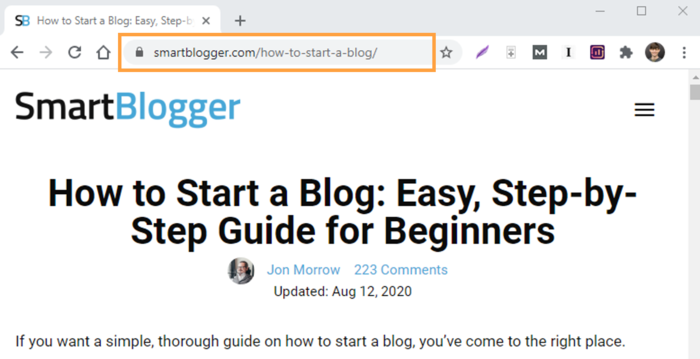
Whether you’re starting your own blog or need to link to other web pages for any reason, you’ll want to get this ubiquitous element of web architecture right.
Keep reading to understand what permalinks are and how to structure them for best results.
What Does a Permalink Look Like?
Every permalink has two parts:
- The web domain
- And the slug

The slug comes after the first forward slash and can include a date, category, post name, or other organizing information.
How Do I Find a Webpage’s Permalink?
Finding (and grabbing) a permalink for a page or post is simple:
- Go to a website, highlight the entire URL in the browser address bar, and select “copy”
- Or, hover your cursor over any link, right-click, and select “copy”
Why Permalinks are Important
Permalinks matter for two key reasons:
- They affect your site’s SEO
- They influence reader experience
Let’s look at both of these factors.
Permalinks Boost SEO
Search engines use permalinks to index your webpages, affecting those pages’ ability to be found as a search result when someone enters a query into a search engine like Google.
Having a consistent permalink structure will make your site more SEO-friendly and help you capture more search traffic.
We’ll look at some options for link structure below.
Permalinks Improve Reader Experience
Optimizing for search is vital, but don’t forget to consider your readers’ experience.
Well-structured permalinks help your readers navigate your site by giving them a clue about where they will land if they click on the link or paste it into the address bar of their browser.
Look at this logically organized, SEO friendly permalink:
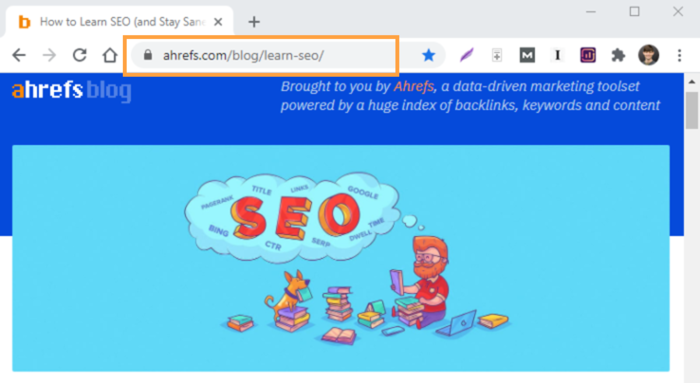
In the example above, there’s no doubt that you’re on the ahrefs blog and you’re going to learn something about SEO.
A clean, simple URL structure always looks better than a jumble of numbers and letters. Don’t let ugly permalinks detract from readers’ perceptions of your brand.
Which URL would you rather click?
This default permalink:
http://www.example.com/index.php?id_tag=364f41730f1
Or this custom permalink:
How To Create a Permalink
If you’re building your own WordPress site or blog, it’s best to choose your custom permalink structure before publishing any pages or posts. This ensures a well-organized and consistent approach while avoiding the need to do any disruptive changes later.
Keep in mind the following best practices to ensure optimal SEO and reader experience when creating your permalinks.
6 Permalink Best Practices
- Make them unique: No two pages or posts should have the same URL
- Keep them short and descriptive:
- Limit or omit unnecessary “stop words” like a, the, on, and, is, of, and you (unless they are part of your page’s main keyword)
- Only include dates, categories, or tags that are necessary for keeping permalinks relevant and organized
- Include the main keyword (see #3) but shorten any longer post titles
- Include SEO keywords: Send a strong signal to search engines, helping your content rank for your page’s main keyword
- Separate words with dashes (not underscores): Make everything easier to read by humans and search engines
- Be consistent: This won’t be an issue if you set your WordPress permalink settings ahead of time (instructions below)
- Use all lowercase: If someone enters an all-lowercase version of a URL that contains uppercase letters, it can lead to an error message (404 page)
Permalink Precautions
Now that you know the best way to structure your permalinks, it’s good to keep in mind a few precautions.
Although it’s best to avoid doing so, sometimes it is necessary to change a permalink.
But be careful.
Done incorrectly, it can cause you to lose precious backlinks and their accompanying SEO juice. Not only that, but if someone linked to your page or post anywhere across the web and a reader tries to click it, they’ll get a 404 error instead of being taken to the correct page.
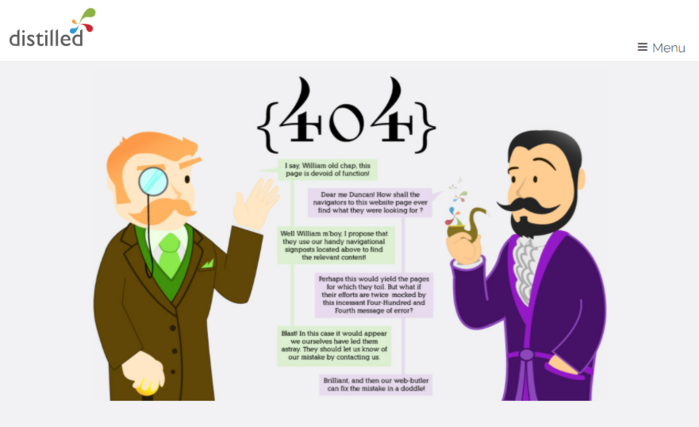
That’s why, if you’re going to change a permalink, you must let the search engines know.
This is done with a 301 redirect. Read this ahrefs.com guide for a deep dive on the topic.
Also, if you have a well-established site with plenty of content, be very careful about restructuring your permalinks. You may need to consult a professional so you don’t break your site and tank your SEO.
Finally, keep in mind that when creating a new page or post on WordPress, the default permalinks are not optimal. They don’t look professional, are not descriptive of the content, and don’t always contain the best SEO keywords.
Make sure to edit them before publishing.
How To Format Permalinks on WordPress
WordPress will generate default permalinks with dates for all pages and posts you publish.
If you ever update your material, you’ll be stuck with the original date in the URL. This makes your content appear dated to readers.

This link should be optimized for better SEO and readability.
To ensure consistent and optimal permalink structure with all your posts, adjust your permalink settings ahead of time by going to:
Dashboard → Settings → Permalinks
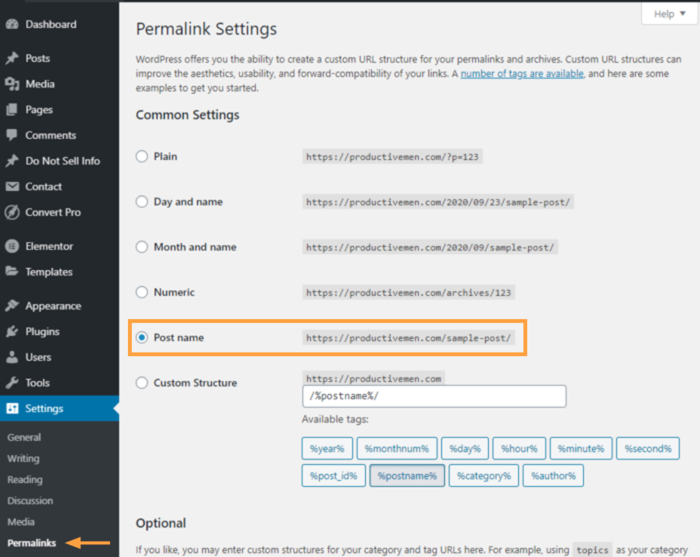
There are a variety of options for you to choose from. Most bloggers find the “Post name” option works best.
Make sure to save your changes after you select your settings.
Even with your permalink presets, it’s still a good idea to manually check them before hitting publish. When added as a slug onto your domain, the post name generally makes your URL very long and unwieldy.
To edit a permalink for a specific page or post, go to:
Dashboard → Page/Post → Title (click on the unpublished page or post with the permalink you want to edit).
Then select Permalink from the dropdown menu and edit the URL Slug:
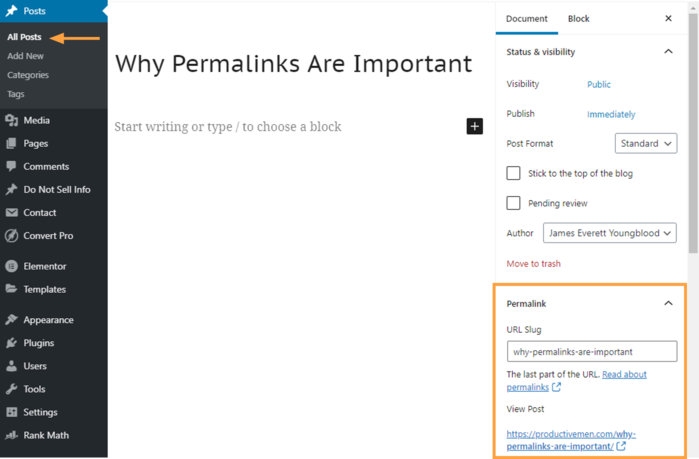
What is a Permalink? Now You Know!
Now you know what permalinks are and how to make them work for you.
Always review them before hitting publish, and remember to apply the best practices you learned here.
Good luck!




